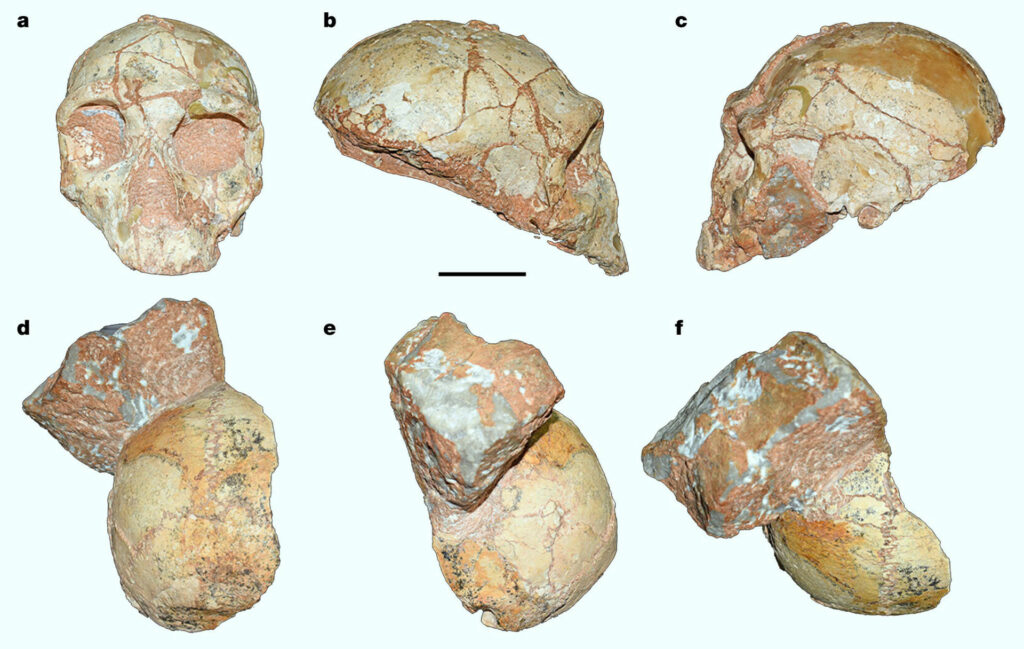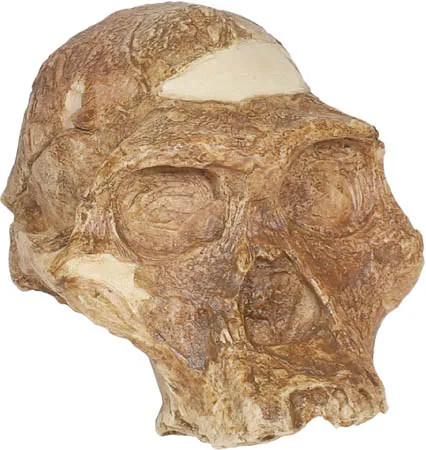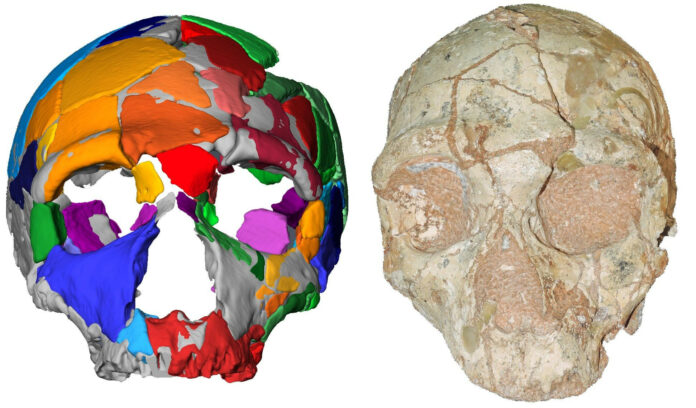A Groundbreaking Discovery in Greece
In the annals of human evolution, few discoveries have been as startling as the one made in Greece’s Apidima Cave. A 210,000-year-old human skull, now known as Apidima 1, has recently been identified as the oldest evidence of Homo sapiens outside Africa. This finding, published in Nature, pushes back the timeline of our species’ migration from Africa by over 50,000 years, challenging long-held beliefs about human evolution.

The Unexpected Treasures of Apidima Cave

The story begins in the 1970s when two cranial fossils were unearthed in Apidima Cave, located on Greece’s Peloponnese peninsula. Initially thought to be Neanderthal remains, these fossils – Apidima 1 and Apidima 2 – remained unstudied for decades. It wasn’t until a recent multinational research team, led by Katerina Harvati, applied advanced digital reconstruction techniques that the true significance of these fossils came to light.
Unveiling the Truth: Homo Sapiens and Neanderthals

The team’s analysis confirmed that Apidima 2 was indeed an early Neanderthal skull, dating back 150,000 years. However, the real breakthrough came with Apidima 1. This partial skull, once thought to be Neanderthal, was revealed to be an early Homo sapiens specimen, astonishingly dated at 210,000 years old.
Reshaping Our Understanding of Human Migration
This discovery has profound implications for our understanding of human evolution and migration patterns. It suggests that our ancestors left Africa much earlier than previously thought, in smaller, less successful waves before the major exodus around 70,000 years ago.
A Complex Tapestry of Human Evolution

The Apidima finding adds to a growing body of evidence that human evolution and migration were far more complex than once believed. It paints a picture of a world where different human species coexisted and interacted, challenging the linear narrative of human evolution that has long dominated scientific thought.
Conclusion: A New Chapter in Human History
The Apidima skull discovery opens up new avenues for research and invites us to reconsider our assumptions about human origins. As we continue to unearth new evidence, the story of our past becomes increasingly intricate, reminding us of the importance of approaching our history with an open mind and a willingness to embrace complexity.

This enigmatic skull from Apidima Cave not only rewrites the timeline of human migration but also serves as a testament to the ever-evolving nature of scientific knowledge. It stands as a pivotal piece in the grand puzzle of human evolution, promising to shape our understanding of our species’ journey for years to come.

